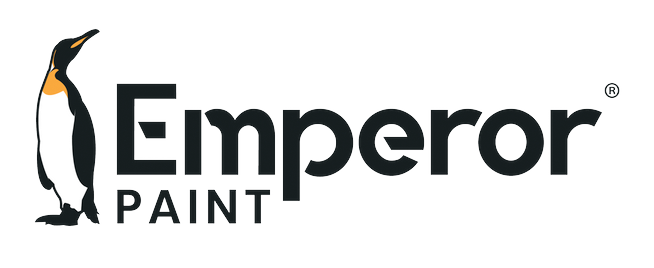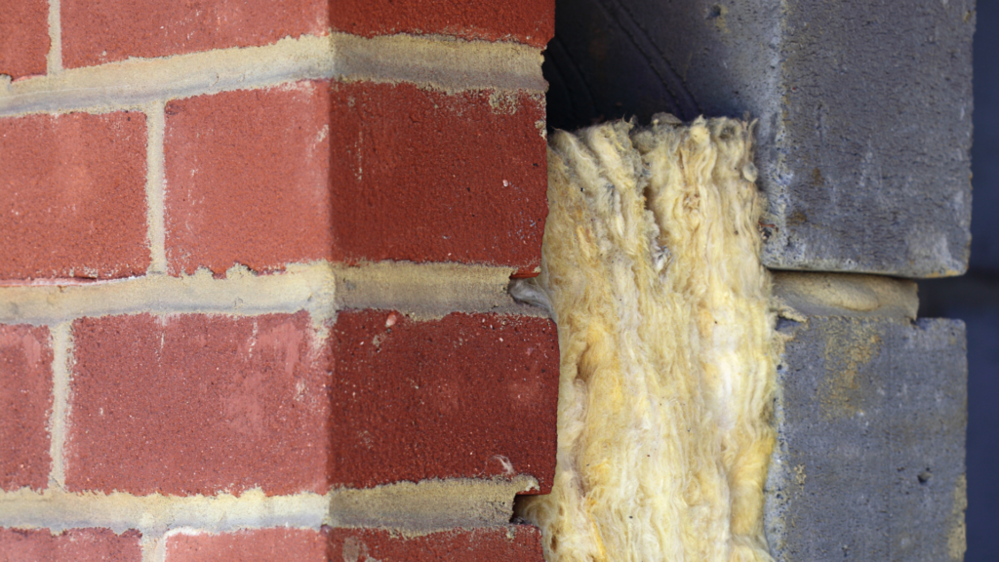
Cavity wall insulation can be problematic for a number of reasons, which is why in recent years there has been a big swift towards removing failing or poorly performing cavity wall insulation in order to prevent these problems. Before you start any process of cavity wall insulation removal, it is important to understand why this is sometimes necessary, how cavity wall insulation is removed and also any other potential solutions for this. For this reason, our team of experts have put together the complete guide to cavity wall insulation removal that contains everything you need to know in one place.
What Is Cavity Wall Insulation?
Pre the 1920's, every property was built in the same way, with what is known as a solid wall construction. A solid wall consists of one singular external wall which over-time would absorb moisture and allow this to naturally breathe back out of the wall.
After the 1920's however, properties were generally built to have a cavity wall, which is two layers of single skin brickwork with a 'cavity' or 'gap' in the middle. This cavity was designed to prevent rainwater from seeping through the walls and into the internal environment of the building by allowing water to drain down the cavity and out of weep vents on the bottom. This meant that external walls did not allow moisture to absorb into the external wall and travel through to the internal wall, which leads to damp and cold interior walls.
Solid wall buildings are notoriously difficult to keep warm due to the link between moisture and heat loss. Damp content of 5% can lower a materials thermal performance by 50%. This, coupled with the fact that 35% of the heat from our homes is lost through the external wall means that solid walls are particularly prone to heat loss due to the amount of moisture they can uptake.
In attempts to make properties more energy efficient, new ways of insultion were developed from the 1990's. One insulating method was cavity wall insulation, which is the process of adding insulating materials to the cavity wall of a property in order to retain heat within the property. A large proportion of homes built after the 1990's were built with cavity wall insulation, however other properties that were not installed with cavity wall insulation at the time of construction often had this installed retrospectively.
Cavity wall insulation is generally made of insulating wool or polystyrene beads and can be installed within the cavity when the building is constructed by applying insulating boards or it can be injected into the cavity through drill holes in the outside walls, that are then sealed with cement.
Cavity Wall Insulation By Numbers:
- By December 2020, there were 14.3 million properties with cavity wall insulation, which is 70% of all properties with a cavity wall
- In the ECO scheme, 32% of measures have been adding cavity wall insulation
- A survey of 250,000 properties across the UK found that one-third of homes are well insulated, one-third have no insulation and one-third have damp or poorly performing insulation
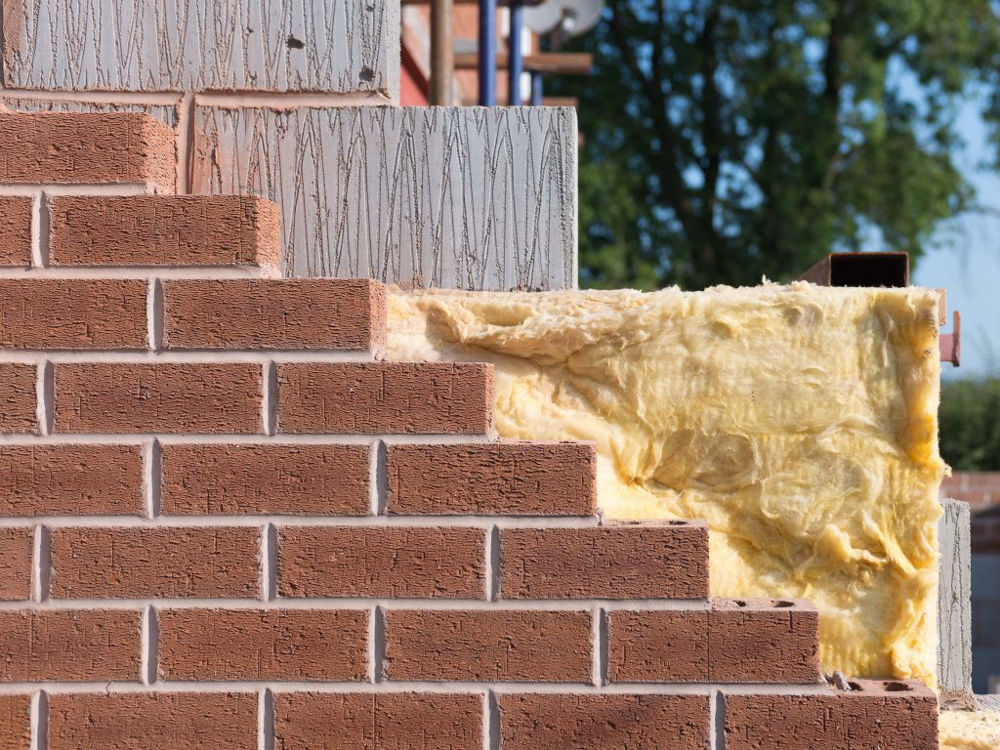
How To Identify Cavity Wall Insulation
There are a number of ways that can help to identify whether you have cavity wall insulation. The first step is to establish if you have a solid wall or a cavity wall, which can be done by looking at the alignment of bricks on the property.
If the bricks are laid uniformly across the masonry, this is a sign that it is a cavity wall property. If there are bricks placed horizontally, creating an uneven pattern, this is a sign that it is a solid wall property.
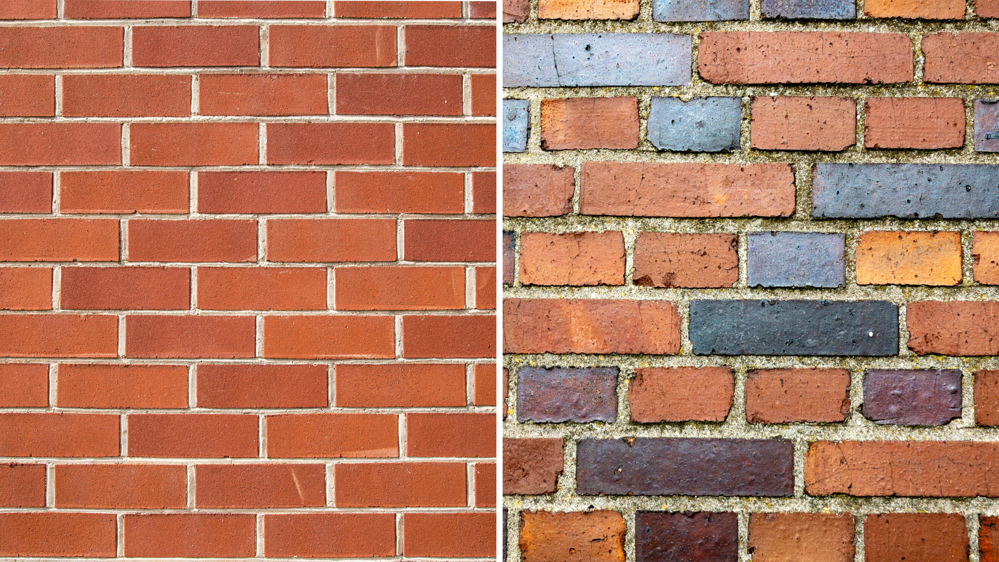
The age of the property will also give you an indication of the type of construction. If your home was built before the 1920's, the likelihood is that this is a solid wall property. Properties after this period are more than likely cavity wall construction.
Once you have identified whether there is a solid wall or a cavity wall, the next step is to establish whether there is cavity wall insulation. If there are any small drills holes across the lower part of a property, this is an indication that there was been cavity wall insulation injected into the property. Furthermore, if the property was built in the last 20 years, cavity wall insulation was likely to be added when it was constructed.
If there are no signs of cavity wall insulation being added and there are no records of what insulation is present, it is recommended you ask a professional to inspect the property to be sure. The professional can make a small hole in the wall and find out whether the cavity is insulated or whether it is empty.
Problems Caused By Cavity Wall Insulation
Research suggests that there is a direct like between cavity wall insulation (CWI) and damp problems, which is caused by a number of factors. In most cases, the cavity wall insulation material in the form of rigid foam boards is fixed to the inner wall leaving a small gap in the cavity to allow any rainwater to run down. This small gap ensures that there is no bridge for moisture to absorb from the external wall into the insulation and then into the internal wall. When insulation is installed properly during the construction phase correctly, it should not suffer from problems relating to penetrating damp.
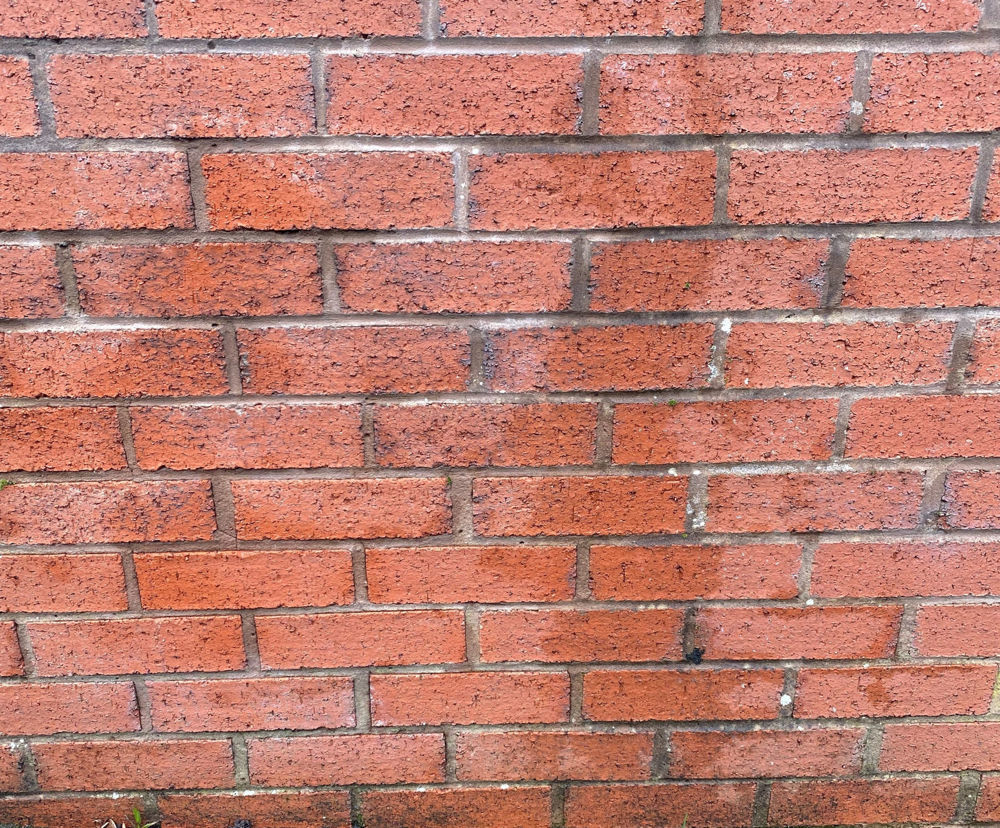
The problem arises when cavity wall insulation is either installed poorly or retrofitted after the construction phase. When the cavity wall is injected an insulating material, the risk of cavity wall insulation causing damp problems can be high. According to the Building Research Establishment (BRE):
“There can be an increased risk of rain penetration if a cavity is fully filled with insulation, i.e. moisture is able to transfer from the outer to the inner leaves resulting in areas of dampness on internal finishes. Rainwater, under certain driving rain conditions, can penetrate the outer leaf of masonry leading to wetting of the cavity insulation, a reduced thermal performance and damage to internal finishes.”
When any external wall is exposed to wind-driven rain, the substrate becomes saturated with water as brick, stone, concrete and render are all porous. Cavity walls were originally designed to prevent this water from soaking through into the internal wall of a property, which causing significant problems such as black mould. When insulation is poorly fitted or retrospectively fitted, this acts as a bridge for this water to soak into the inner wall and cause damp, creating the same problem that cavity walls were designed to solve.
Cavity wall insulation can cause a number of other moisture-related issues. The first of which relates to gaps in the insulation, which can lead to temperature variations known as 'cold spots'. When warm air touches cold spots it leads to the development of condensation, which causes damp with the wall. These gaps in the wall can be caused by poorly fitted insulation or by the insulation sinking to the bottom of the cavity. Air vents that are designed to help maintain the breathability of a property can also be covered by poorly fitted insulation, reducing the breathability of the wall and leading to a build-up of water vapour within the property.
These problems are what lead to many homeowners taking the costly decision to have cavity wall insulation removed or extracted, to prevent cavity wall insulation being saturated with moisture and ultimately having a negative impact on the energy efficiency of a property.
Cavity Wall Insulation Removal
If you have identified that cavity wall insulation is leading to problems in your property, you may decide that cavity wall insulation removal is the best option. This is done by blowing compressed air into the cavity while an vacuum collects the insulation, rubble and debris from the cavity wall. This is a specialist process that must be undertaken by professionals, so we recommend that you seek a reputable insulation specialist regarding removing cavity wall insulation.
Checkatrade estimate that on average, the cost of cavity wall insulation removal starts from around £1,680 and can rise to £2,520 for a typical detached property.
An Alternative To Cavity Wall Insulation Removal
If your cavity walls are experiencing problems with cavity wall insulation causing moisture to bridge into the internal wall of a property, there are a number of things you can do before you decide to remove the insulation. Many cavity wall insulation installers will offer a guarantee of quality covered by the Cavity Insulation Guarantee Agency (CIGA), which means if you have any documentation from when cavity wall insulation was installed, this can help you get assistance with poorly fitted insulation.
Due to the nature of cavity wall insulation getting saturated with moisture, by preventing this moisture entering the wall, you can prevent the moisture problems altogether. Applying a treatment to the external wall to prevent the moisture absorbing into the wall is a process that can be done by yourself at home and can cost a fraction of the price of extracting cavity wall insulation and re-installing it.
When it comes to waterproofing exterior walls, the most important thing is to ensure that the breathability of the property is not compromised. In previous years, 'sealers' such as brick sealers were developed that would create a water repellent surface on external walls, but also seal water vapour in the property. This water vapour would naturally build-up within the property until it would cause damp and mould to develop, as it had no where to go. It would also lead to bricks spalling and cracking, due to the high-levels of moisture the sealer would create. Eventually, when the moisture reached breaking point it would cause the sealer to burst and fail, leaving the bricks unprotected again. For this reason, you must ensure you only apply a product to exterior walls that is highly breathable. To be considered breathable by British Standards, a product must have an SD value of below 0.5. The lower the SD value, the more breathable a product is and the more moisture it will allow to naturally breathe out of a wall.
To prevent moisture entering the external wall but also maintain full breathability of the property, it is recommended that you use a highly advanced super hydrophobic treatment that uses what is known as 'nano-technology'. Nano-technology ensures that water in the form of rain is too large to pass through a surface, while water vapour can freely pass through the pores of a substrate. Emperor Masonry Paint and Emperor Masonry Creme were developed using this nano-technology in order to keep exterior walls dry. They create a super hydrophobic surface on masonry which causes water to form 'beads' on the surface and simply fall off. This means that 96% of water absorption is prevented and external walls do not allow moisture to soak cavity wall insulation.
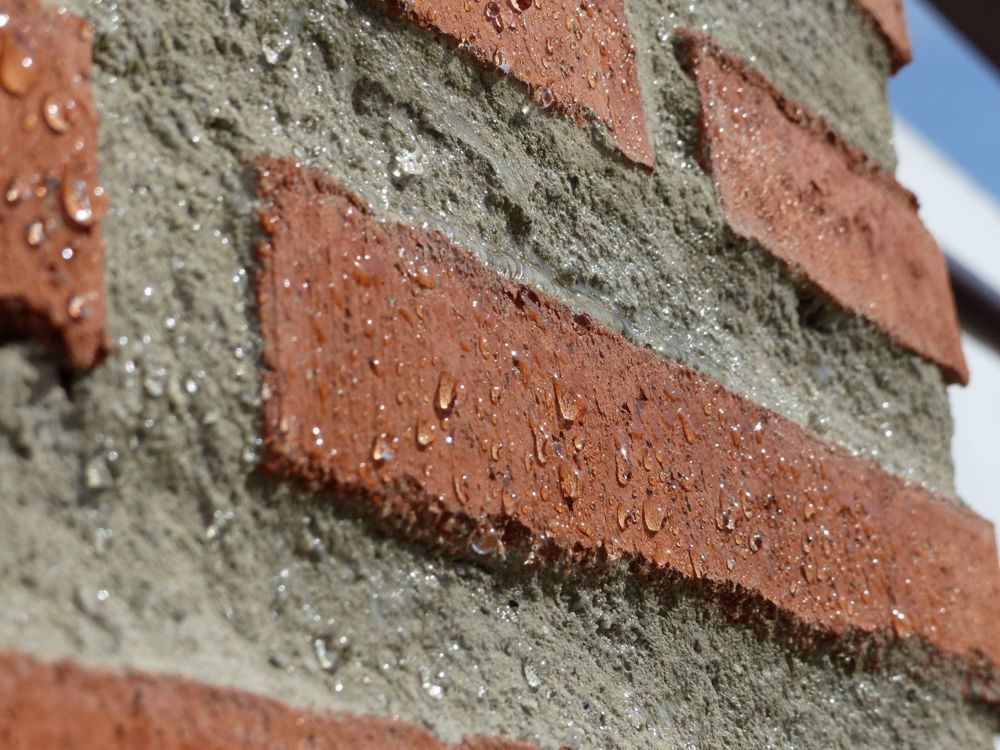
While repelling water, Emperor Masonry Paint & Creme have SD values of 0.03 and 0.01 respectively. These means that they are highly breathable, ensuring any water vapour can freely pass through the wall once treated.
While they both repel water and are highly breathable, Emperor Masonry Paint and Emperor Masonry Creme have very different applications. Emperor Masonry Paint is a coloured paint that can be applied to any bare or previously painted brick, stone, concrete or rendered wall. Emperor Masonry Creme on the other hand creates a clear protective barrier on bare masonry surfaces that once dry is completely invisible. It absorbs into the masonry much in the same way as a moisturiser and chemically bonds to the brick itself. This means that it provides masonry with water repellent properties rather than creating a water repellent film on the surface. This is in contrast to sealers that create a film on the surface of the masonry which not only impacts breathability but also means there is a film to weather over-time.
By applying either Emperor Masonry Paint or Emperor Masonry Creme to the external walls of a property, you prevent the water ingress that leads to not only damp problems but heat loss. A wet external wall will transfer heat much quicker than a dry one. Due to this, by keeping external walls dry, Emperor Masonry Paint & Creme improve the heat retention and energy efficiency of a property. Independent testing by a UKAS accredited laboratory found that a brick wall treated with Emperor Masonry Paint & Creme was 6°C warmer on average when compared to an untreated brick wall. Following this testing, both products were verified by the Energy Saving Trust following their independent review process.
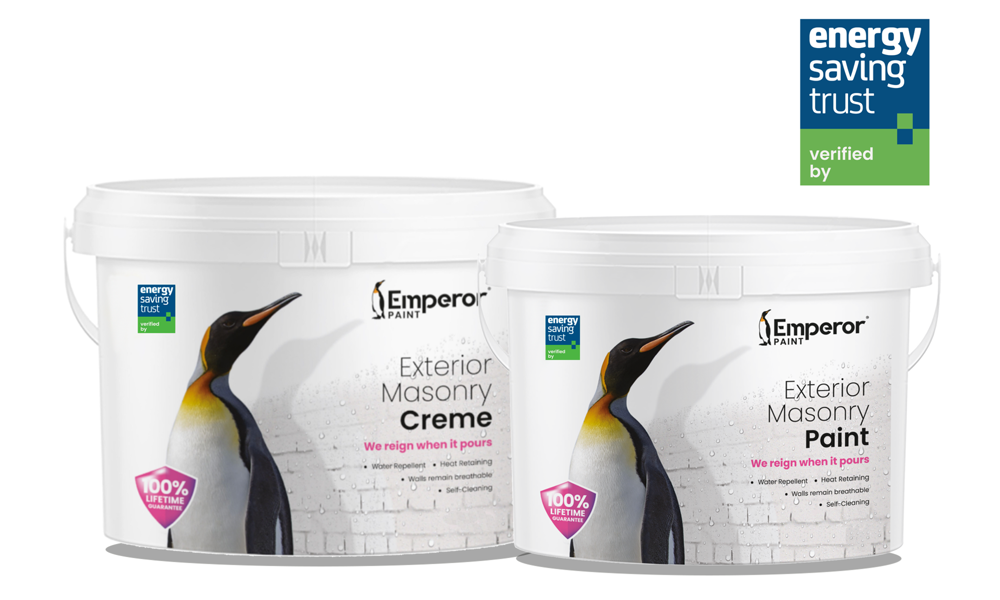
The same independent testing also subjected both products to a 25 year accelerated weather process to identify how durable the products were in harsh weather conditions. After 25 years of equivalent weathering, both Emperor Masonry Paint and Emperor Masonry Creme showed no signs of deterioration in performance of appearance, meaning they both looked and performed in the same way as when they were originally applied. This meant both products passed the EAD 090062-00-0404 – 25 year hygrothermal performance Quality Standard. For this reason, Emperor Paint products come with a lifetime guarantee, as they will likely far exceed their 25 year proven performance.
How To Prevent Wet Cavity Wall Insulation
The first step of preventing wet cavity wall insulation is to select the right treatment for you. The best treatment for you will depend on two things; the look you want to achieve and the surface you are treating.
Many properties today have painted exteriors, mainly due to a shift towards rendering as an external finish. If you have a previously painted render, brick, stone or concrete exterior wall, applying Emperor Masonry Paint is ideal to apply straight to this surface. If you are painting a bare natural masonry wall that has not been previously painted, there are two options. You can either apply Emperor Exterior Primer followed by Emperor Masonry Paint for a painted finish, or you can apply Emperor Masonry Creme to this to maintain the natural beauty of the brickwork. Emperor Masonry Creme due to the way it absorbs into brickwork can only be applied to natural, unpainted walls, so if you have a previously painted surface this is not suitable.
The application process of Emperor Masonry Paint and Emperor Masonry Creme are different, however they can both be done at home yourself.
YOU WILL NEED:
- Emperor Masonry Paint or Emperor Masonry Creme
- Emperor Exterior Primer (if required)
- Emperor Exterior Cleaner
- 9" long-pile roller
- Paint tray or scuttle
- Paint brush
- Wire brush
- Dust sheets
- Window film
- Masking tape
- Exterior filler & filling knife (may be required)
- 120 grit sandpaper (may be required)
- Scraper (may be required)
PREPARATION
No matter what treatment you are applying to an exterior wall, the most important part of the process is to prepare the surface properly. If you do not properly prepare the surface, the treatment you eventually apply will be compromised and you won't get the results you want from the project.
Before you do anything else, ensure you clean down the surface to remove any contaminants. This can be done by power-washer, hosepipe or simply a stiff brush and hot soapy water. At this stage, cleaning the wall will also help remove any loose or defective paint. You may also decide to use a wire brush or a scraper to further remove any paint that is beginning to peel, until you have a 'firm edge' where no more paint will come off.
Once surface level dirt is removed from the wall, we highly recommend applying a fungicidal cleaner to the wall such as Emperor Exterior Cleaner. Organic growth such as mildew and lichens can develop on exterior walls, especially when they have been subject to high levels of moisture. By applying a fungicidal cleaner, this organic growth is killed and cannot continue to grow on the wall. If you do not apply a fungicidal cleaner, you can run the risk of this growth continuing to bloom, which in some cases could cause paint failure.
Once the surface is clean, the next step is to ensure you make any repairs to the masonry, such as cracks. Any defects in the wall will allow moisture to get into the masonry, which is why by making repairs, you ensure that the waterproofing treatment you apply can do its job and prevent any water ingress. Start by removing any loose debris from the crack or hole as this will prevent the filler from properly bonding to the crack. You may need to rake out any cracks to make them big enough to fill. While this may seem counterintuitive, making the defects larger is the best way to ensure you can fully fill the crack and get a solid finish that won't allow any moisture to get into the wall. We recommend using a good quality filler such as Toupret Masonry Repair Filler to fill defects. Once fully dry, sand the filler back to your desired finish and clean away any dust.
TIP: It is recommended to overfill defects as filler can sometimes shrink when it dries.
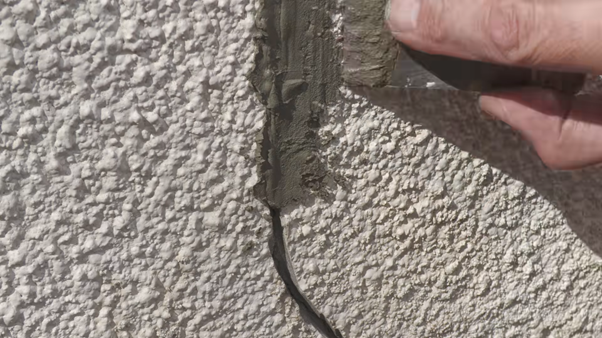
If you are applying Emperor Masonry Paint to a surface that has not been previously painted or you have some areas that you have filled and repaired, these must be primed before you paint them. This is because without applying a primer, you run the risk of the paint not adhering to the surface or soaking into the bare surface, leaving a patchy finish. Emperor Exterior Primer is a one-coat primer that is applied in a thin, milky liquid at 5-8m2 per litre with a brush, roller or pump sprayer. Allow the primer to dry for between 3-5 hours before overcoating this in Emperor Masonry Paint.
Finally, protect any surrounding surfaces such as windows, doors, drain pipes and floors to ensure that the clean-up is as easy as possible.
APPLICATION - EMPEROR MASONRY PAINT
Let's start with the application of Emperor Masonry Paint, as due to it being a paint it is something we are all familiar with. Emperor Masonry Paint is a two-coat paint that can be applied using a roller, brush or airless spray machine. The easiest way to apply for the average homeowner however is a combination of masonry brush and long-pile roller.
Start with applying the first coat of paint, starting at the top of the wall and working your way down. The coverage you are looking for is 5-6m2 per litre, which is what you need to achieve if you want the best performance and appearance. Once you have applied your first coat, allow this to dry for 5-8 hours, depending on the temperature.
TIP: The drying time is crucial. While a paint can be touch dry and showerproof in 1-2 hours, this does not mean that the paint underneath the surface is fully dry. If you apply a second coat too soon, this paint will not dry properly underneath the surface and you will experience problems.
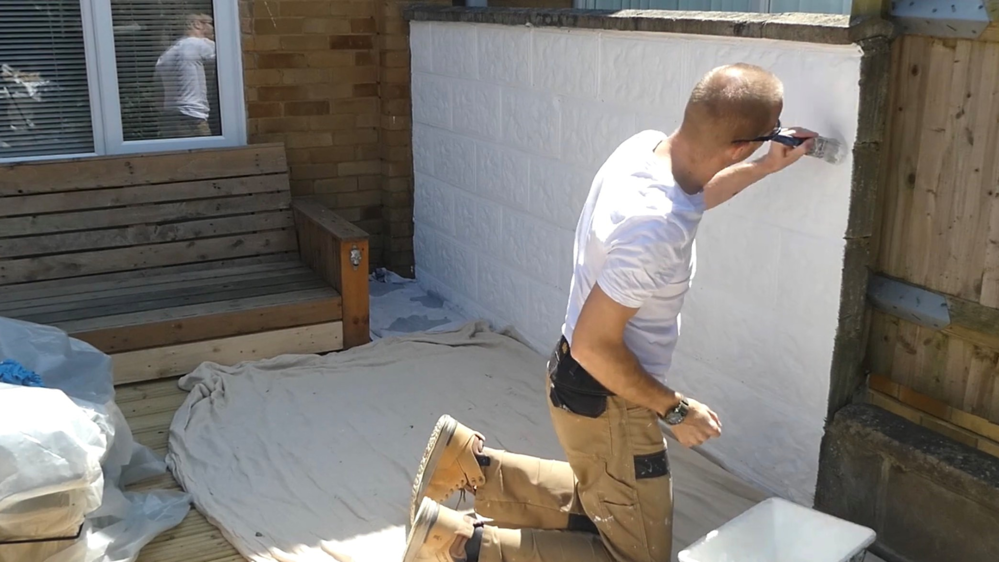
APPLICATION - EMPEROR MASONRY CREME
Emperor Masonry Creme as an invisible treatment is applied differently to a paint. While it can be applied using a brush, roller or airless spray machine, and is applied at 5m2 per litre, in contrast to Emperor Masonry Paint it is simply applied on to the masonry rather than brushed into the masonry. Once it has been brushed on to the surface, simply leave this for 2 hours to absorb into the brickwork. After 2 hours, the masonry will be completely natural with no change in sheen or colour.
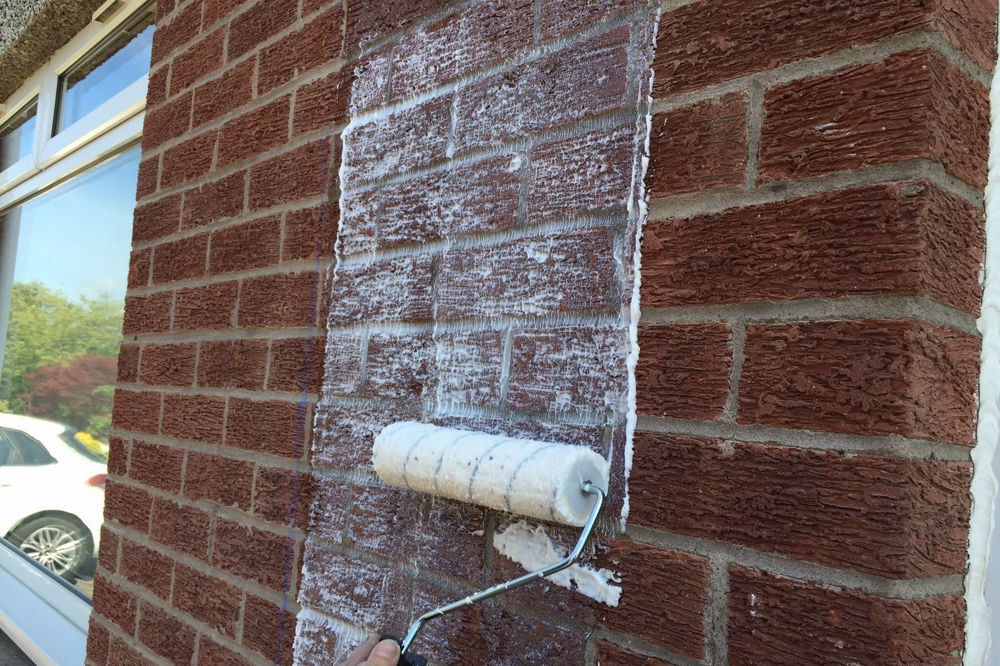
Frequently Asked Questions
Q. COULD CAVITY WALL INSULATION BE CAUSING HEAT LOSS IN MY HOME?
The primary function of cavity wall insulation is to improve the energy efficiency and heat retention of a property, however as we have discussed, moisture counteracts this heat retention. Any moisture that is allowed to saturate insulation will cause it to create a 'thermal bridge', allowing heat to pass through the insulation and out of the external wall. For insulation to do its job, it must be kept dry as the highly porous insulation will uptake large amounts of water if given the chance.
Q. WHAT ARE THE SIGNS OF PENETRATING DAMP?
There are a wide variety of indicators that a property is suffering from penetrating damp. Common signs of penetrating damp are:
- Visible moisture marks on the external wall of a property
- Salt efflorescence that takes the form of a white, powdery substance that is caused by water ingress
- Damage to exterior walls, including cracked bricks & crumbling mortar
- Water marks on interior walls that could cause paint or wallpaper to peel
- Green growth such as lichens, mildew and algae on exterior walls
- A musty, damp smell
The most important thing to do if you think your property is suffering from penetrating damp is to identify whether the moisture is attacking the external wall. Cracked bricks or render, spalling brick faces and generally poor condition of the masonry will indicate that wind-driven rain is absorbing into the wall.
Q. CAN EMPEROR MASONRY PAINT & CREME BE USED ON ANY PROPERTY?
You do not need to have cavity wall insulation to benefit from Emperor Paint nano-technology. By preventing water ingress and maintaining full breathability, any property will see benefits. Even if you have a property that does not suffer from damp problems, the best way to protect external walls from future damage and deterioration is to apply the treatments. After all, the easiest solution to damp problems is to prevent them occurring in the first place.
Q. HOW DOES THE EMPEROR PAINT LIFETIME GUARANTEE WORK?
Both Emperor Masonry Paint and Emperor Masonry Creme come with a lifetime guarantee, ensuring their performance in all weather conditions. If the products are applied as per the manufacturers instructions and for any reason failed, we would replace these products completely free of charge. This is because the 25 year weathering tests indicated that there were no signs of change in performance or appearance after 25 years of harsh weathering, meaning they will likely far exceed this lifespan.
We hope we have answered any questions you may have had regarding cavity wall insulation and potential alternative solutions. If you have any other questions feel free to get in touch with our team of experts who are on hand to assist you. Contact them today by emailing info@emperorpaint.co.uk or calling them on 0161 509 9009. Alternatively, shop Emperor Masonry Paint today and get free delivery on all orders.

